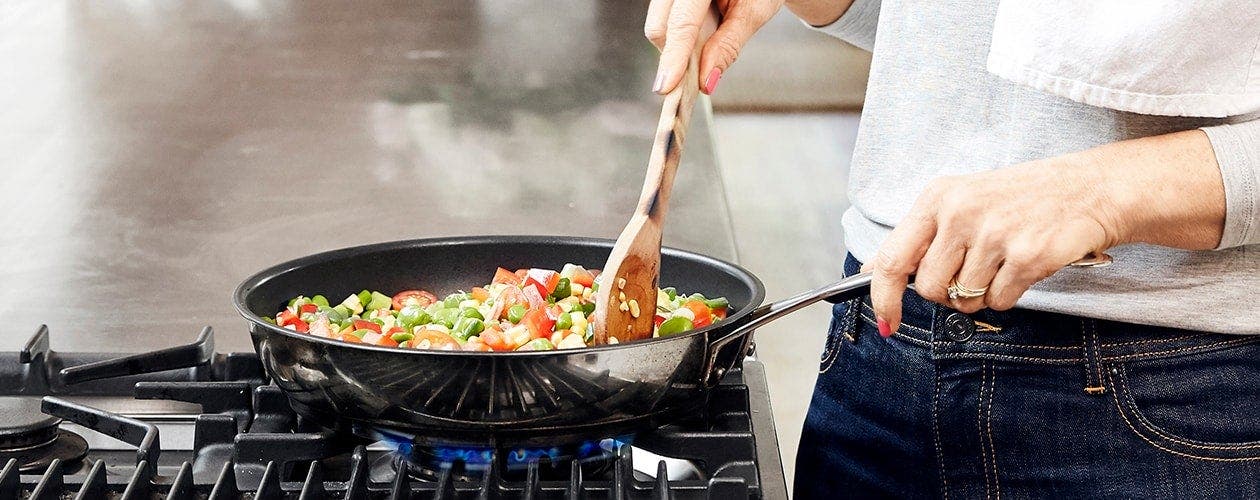Cheap & healthy food options you can eat on a budget


How to save money and eat well
The average Australian family spends about $270 every week on food – that’s a big chunk of your weekly earnings. If you’re watching your weight, or just want to improve the nutritional content of your meals, some forward planning can save you both money and Points. Follow our tips and you’ll see that enjoying delicious food on a budget is easier – and more fun – than you think.
1. Plan your meals and use a shopping list
“The most important factor in healthy eating is meal planning,” says Anika Rouf, spokesperson for the Dietitians Association of Australia. “Meal planning gives you more control over what you eat throughout the day and week, and will save you time and money in the long run. Plan your purchases by writing a grocery list and sticking to it.”
If you’re watching your wallet and weight, spend the majority of your shop along the perimeter of the supermarket. “This is where the healthy options are: fruit, vegetables, and lean meat,” says Rouf. Try to avoid the biscuit and confectionary aisles where possible.
Aussies waste one in every five bags of food we buy, which adds up to more than $1000 of groceries thrown away every year. Sticking to your list helps you to buy only what you need suggests Rouf. “Buy staples when they’re on special to ensure your dollar stretches further.”
2. Cook more at home
“Cooking at home is cheaper and, typically, healthier than eating out,” says Rouf. “You’ll be able to control the ingredients and ensure things you’re trying to avoid, such as sugars and salt, aren't included.” Rouf suggests making large batches of your favourite WeightWatchers® recipes and freezing portions to defrost on those days you’re too busy to cook from scratch. “Eating at home means you can also control your portion sizes,” she says. Studies have shown restaurant serving sizes have increased during the past few decades, so you tend to eat more than you would if you ate the same meal at home.
3. Don’t shop when you’re hungry
Heading to the grocery store when your stomach is growling can be risky in terms of food choices and potential overspending. “When you’re hungry you’re more likely to buy something impulsively,” says Rouf. “You’ll tend to feel like foods which aren't necessarily healthy, such as sweet treats” Shop straight after breakfast or lunch or avoid the shops altogether by switching to shopping online.
4. Look for frozen fruits and vegetables
A recent study found those who ate frozen fruit and vegetables had significantly higher intakes of key nutrients potassium, fibre, and calcium and ate more serves of fruit and vegetables overall. “Frozen fruit and vegetables, as well as canned veg, are very similar in nutrients to fresh, but can be cheaper,” agrees Rouf. “You’ll also waste less food, as you’ll be able to keep frozen or canned foods for much longer than fresh food without them spoiling.”
5. Enjoy meatless meals
“Meat can be expensive, so add canned beans or lentils to mince, stews or soups to make the meal go further,” says Rouf. Try to opt for vegetarian meals at least once a week for your health and wallet. Going meatless just one day a week may reduce your risk of chronic diseases such as cancer, cardiovascular disease, and diabetes.
6. Compare the costs
The Dietitians Association of Australia says price comparisons between fresh and packaged foods can help you make healthier and cheaper choices. Consider:
1 apple = 60 cents 1 chocolate bar = $2.50
“You can buy four apples for the cost of a chocolate bar,” says Rouf. “We know we should be eating lots of fruit and vegetables every day to ensure we’re getting lots of nutrients and preventing long-term chronic disease. Chocolate bars are going to give little or no nutrients, so it’s better to stick to whole foods.”
7. Bring your own lunch to work
Making your own lunch could save you about $2340 a year. Just imagine the clothes you could buy! “Packing your own lunch means you’ll be eating healthily while saving a lot of money,” says Rouf.
Your healthy budget shopping list
✓ Stock up on canned versions of healthy whole foods, such as vegetables and legumes.
✓ Buy staples such as lentils, oats, pasta, nuts, seeds, eggs and canned fish when on special.
✓ Try to keep frozen whole foods such as fruit and vegetables as a staple in your freezer.
✓ Buy seasonally. Out-of-season foods can be more expensive.
✓ Buy in bulk when it comes to must-have items such as rice, pasta, and cooking oils.
